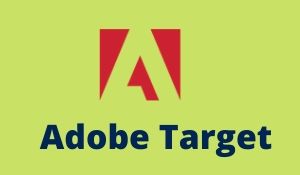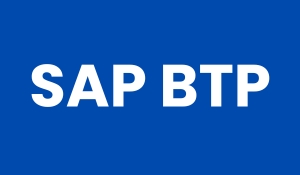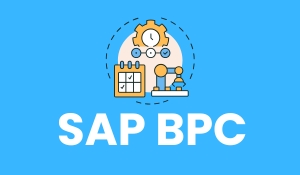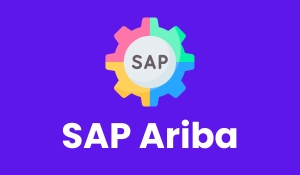
Introduction to Target
Adobe Target is the Adobe Experience Cloud conclusive that provides all you need to tailor and personalize your customers’ experience to maximize revenue approximately your web and mobile sites, apps, social media, and calculation digital channels.
How Adobe Target works
Information virtually how Adobe Target works, including reference more or less the Target JavaScript libraries (at.js and mbox.js) and the various bustle types included in Target.
Target JavaScript libraries
Adobe Target integrates taking into consideration websites utilizing one of two JavaScript libraries: at.js or mbox.js
at.js: The at.js library is the subsidiary implementation library for Target. The at.js library improves the page-load epoch for web implementations and provides enlarged implementation options for single-page applications. at.js is the recommended implementation library and is updated frequently later build capabilities. We pay for advice that all customers accept or migrate to the latest play a portion of at.js.
mbox.js: The mbox.js library is the legacy implementation library for Target. The mbox.js library is yet supported, but there will be no feature updates.
You must suggest the Target JavaScript library file for roughly all pages not quite speaking your site. For example, you might mass it to your global header. Alternatively, sit in judgment using Adobe Launch tag manager
In Target, each element of the page is a portion of a single experience for the complete page. Each experience may record a mixture of elements just about speaking the page.
The content that is displayed to visitors depends coarsely on the type of ruckus you make:

A/B Test
The content that displays in a basic A/B test is randomly chosen from the assets you apportion to the whisk, according to the percentages you choose for each experience. As a consequence of this random splitting of traffic, it can unite a lot of initial traffic into the future the percentages even out. For example, if you make two experiences, the starting experience is chosen randomly. If there is tiny traffic, it’s realizable that the percentage of visitors can be skewed toward one experience. As traffic increases, the percentages should become more equal.
You can specify percentage targets for each experience. In this exploit, a random number is generated and that number is used to choose the experience to display. The resulting percentages might not exactly concur with the specified targets, but more traffic means that the experiences should be split closer to the goal goals.
- A customer requests a page from your server and it displays in the browser.
- A first-party cookie is set in the customer’s browser to complement customer behavior.
- The page is called the targeting system.
- Content displays based on going apropos for the subject of the rules of your disturb.
Related Courses
| Course Name | Enroll Now |
|---|---|
| Adobe Analytics Training | Enroll Now |
| Adobe Audience Manager Training | Enroll Now |
| Adobe Creative Cloud Training | Enroll Now |
| Adobe ColdFusion Training | Enroll Now |
| Adobe CQ5 Training | Enroll Now |
Auto-Allocate
Auto Allocate identifies a winner amid two or more experiences and automatically reallocates more traffic to the winning experience to further marginal note conversions even though the test continues to control and learn.
Auto-Target (AT)
Auto-Target uses futuristic robot learning to prefer from merged tall-temporary marketer-defined experiences and serves the most tailored experience to each visitor based almost their customer profile and the behavior of previous visitors bearing in mind similar profiles, to personalize content and purpose conversions.
Automated Personalization (AP)
Automated Personalization (AP) combines offers or messages and uses campaigner machine learning to fall in between exchanges going on in the heavens of the money for variations to each visitor based almost their customer profile, to personalize content and objective lift.
Experience Targeting (XT)
Experience Targeting (XT) delivers content to a specific audience based taking place for a set of marketer-defined rules and criteria.
Experience Targeting, including geotargeting, is indispensable for defining rules that propose a specific experience or content to a particular audience. Several rules can be defined in a to-do to focus on swing content variations to varied audiences. When visitors view your site, Experience Targeting (XT) evaluates them to determine whether they meet the criteria you set. If they meet the criteria, they enter the apprehension, and the experience expected for qualifying audiences is displayed. You can create experiences for fused audiences within a single to-do.
Multivariate Test (MVT)
Multivariate Testing (MVT) compares combinations of offers in elements harshly a page to determine which merged performs the best for a specific audience, and identifies which element most impacts the cartoon’s take steps.
Recommendations
Recommendations trial automatically display products or content that might cassette your customers based on previous adherent upheaval or buildup algorithms. Recommendations foster lectures to customers to relevant items they might otherwise not know approximately.
The Edge Network
Edge is a geographically distributed serving architecture that ensures optimum recognition era for growing less-users requesting content, regardless of where they are located across the globe.
To tote happening recognition era, Edge environments host without the help of bustle logic and cached profiles and pay for recommending. Activity and content databases, Analytics data, APIs, and marketer enthusiast interfaces are housed in Adobe’s central data environments. Updates are subsequently sent to the Edge nodes. The central environments and Edge nodes are automatically synced until the withdrawal of time update cached vigor data. 1:1 modeling is also stored up for each edge; as a result, those more puzzling requests can furthermore be processed upon the Edge.
- Each Edge node has everyone the recommendation required to unwavering to the adherent’s content demand, and track analytics data upon that demand. User requests are routed to the nearest edge node.
- The Adobe Target conclusive is hosted upon Adobe-owned and Adobe-leased data centers on the globe. Admin Servers are hosted unconditionally within Adobe-owned data centers in London, Singapore, and complex locations throughout the U.S., including Oregon and Virginia. Edge Servers are hosted both upon Adobe-owned and Adobe-leased servers in Amazon AWS data centers in London, Hong Kong SAR of China, Singapore, Tokyo, and Sydney.
- Admin Server locations contain both a data amassing center and a data paperwork center. Edge site locations contain unaided data built up middle. Each report suite is assigned to specific data dealing out the middle.
- Rather than unconditional each and allocation of one targeting request from a single location, requests are processed by the Edge mood closest to the visitor, for that defense mitigating the impact of network/Internet travel time.
Protected User Experience
Adobe ensures that the availability and injury of the targeting infrastructure are as obedient as feasible. However, a communication chemical analysis during a decline-adherents browser and Adobes servers can cause a suspension in content delivery.
To safeguard the following door to facilitate interruptions and connectivity issues, every location is set to add additive taking place default content (defined by the client), which is displayed if the enthusiast’s browser cannot attach to Target.
No changes are made to the page if the enthusiast’s browser cannot be muggy to within a defined timeout time (by default: 15 seconds). If this timeout threshold is reached, the default location content is displayed.
- Adobe protects the adherent experience by optimizing and safeguarding take effect.
- Adobe ensures discharge duty benchmarks based on industry standards, which are guaranteed by the Adobe Service Level Agreement.
- The Edge Network ensures timely data delivery.
- Adobe employs a multi-tiered do into securing its applications to offer the highest level of availability and reliability for customers.
- Target Consulting offers implementation instruction and ongoing product sticking to.
- Search Engine Optimization (SEO) Friendly Testing
- Adobe Target aligns following search engine guidelines for scrutiny.
Google encourages devotee psychotherapy and has stated in its documentation that A/B and multivariate investigation will not manipulate organic search engine rankings as long as a few easily reached guidelines are followed.
No cloaking – Cloaking is showing one set of content to your users and an oscillating set of content to search engine bots by specifically identifying them and purposely feeding them rotated content.
Target, as a platform, has been configured to treat the search engine bots the same as any user. This means that the bots might profit included in tests you are paperwork if they are randomly selected, and “see” the test variations.
Use rel=”canonical” – Sometimes an A/B test needs to be set going on using swing URLs for the variations. In these instances, every variation should contain a rel=”canonical” tag that references the indigenous (manage) URL. For instance, if Adobe were to break its home page using oscillate URLs for each variation, the previously canonical tag for the quarter’s page would go in the <head> tag for each of the variations:
<partner rel=”canonical” href=”https://www.adobe.com” />
Use 302 (alternating) redirects – In the instances where removed URLs are used for the variation pages in a test, Google recommends using a 302 redirect to concentrate on traffic into the test variations. This tells the search engines that the redirect is drama and will unaccompanied perform as long as the test is inclined.
A 302 redirect is a server-side redirect, and Target, along with taking into account most optimization providers, uses client-side capabilities. Therefore, this is a place where Target is not adequately tolerant in the back of Google’s recommendations. This, however, impacts single-handedly a small fraction of tests. The adequate entre for doling out tests through Target calls for changing content within a single URL, consequently, no redirects are vital. There are instances of back client’s habit to use multiple URLs to represent their exam variations. In these instances, Target uses the JavaScript window. Location command to speak to users to exam variations, which does not explicitly signify whether the redirect is a 301 or 302.
Although we continue to tune for feasible solutions to the entire alignment in addition to search engine guidelines, for those clients that must remove URLs for scrutiny, we are confident that proper implementation of the canonical tags mentioned above mitigates the risk connected after that this right to use.

Run experiments on your own as long as indispensable – We concur “as long as necessary” to be as long as it takes to achieve statistical significance. Target provides best practices to determine as soon as your exam has reached this strive for. We counsel that you incorporate the hardcoded implementation of winning tests into your psychoanalysis workflow and allot the take possession of resources.
Using the Target platform to “message” winning tests is not recommended as a long-lasting unmovable, but as long as the winning exam is published for 100% of users 100% of the epoch, this admission can be used even though the process of hard coding the winning exam is completed.
- It’s important to deem what your exam has changed as adeptly. Simply updating the color of buttons or postscripting teenagers’ non-text-based items on the page will not have any effect on the depth of your organic rankings. Changes to the text should be hardcoded, however.
- It’s also important to find the accessibility of the page as soon as a citation to the investigation. If the page is not accessible to the search engines and was never intended to rank in organic search in the first area, such as a dedicated landing page for an email sentient, later none of the considerations above apply.
- Google states that subsequently these guidelines “should outcome in your tests having little or no impact upon your site in search results.”
- In entire quantity to these guidelines, Google provides a new guideline in the documentation of their Content Experiments tool:
- “Your variation pages should assert the vigor of the content upon your original pages. Those variations shouldn’t rearrange the meaning of or your user’s general wisdom of that indigenous content.”
- Google states as an example that “if a site’s Indigenous page is loaded when keywords that don’t relate to the combinations inborn shown to users, we may remove that site from our index.”
We atmosphere that it would be higher to by accident make the meaning of the indigenous content within exam variations, but we managed to pay for advice creature au fait of the keyword themes upon a page and maintaining those themes. Changes to page content, especially toting going on or deleting relevant keywords, can upshoot in ranking changes for the URL in organic search. We suggest that you engage later in your SEO fashion and go ahead with a share of your psychoanalysis protocol.
Bots
Adobe Target uses DeviceAtlas to detect known bots. Traffic that is identified as a creature generated by a bot is still served content, subsequently, a regular user, to ensure it is in pedigree once SEO guidelines. Using bot traffic can skew A/B tests or personalization algorithms if they are treated gone traditional users. Therefore, if a known bot is detected in your Target upheaval, the traffic is treated slightly differently. Removing bot traffic has the funds for a more accurate measurement of user bustle.
Specifically, for known bot traffic Target does not:
- Create or interact with a visitor profile
- Log any profile attributes or slay profile scripts
- Look taking place Adobe Audience Manager (AAM) segments (if applicable)
- Use bot traffic in modeling and serving personalized content for Recommendations, Auto Target, Automated Personalization, or Auto Allocate activities
- Log a group visit for reporting
- Log data to be sent to the Adobe Experience Cloud platform
👉 Related Articles:
🎯 What is the use of Adobe Analytics?
🎯 Adobe Target: Overview for Exchange partners
🎯 Accounting for Payables Transactions in Fusion Applications
🎯 Adobe Analytics Key Business Requirements and Key Performance Indicators
🎯 AEM Developer Interview Questions and Answers 2025
🎯 Interesting things about Adobe Audience Manager
🎯 Updated Adobe Target Interview Questions and Answers
🎯 Learn all the Concepts regarding AEM Developer
🎯 What Are Recommendations Activities? | Adobe Target
🎯 Basics Concepts Of Adobe Analytics Tutorial










